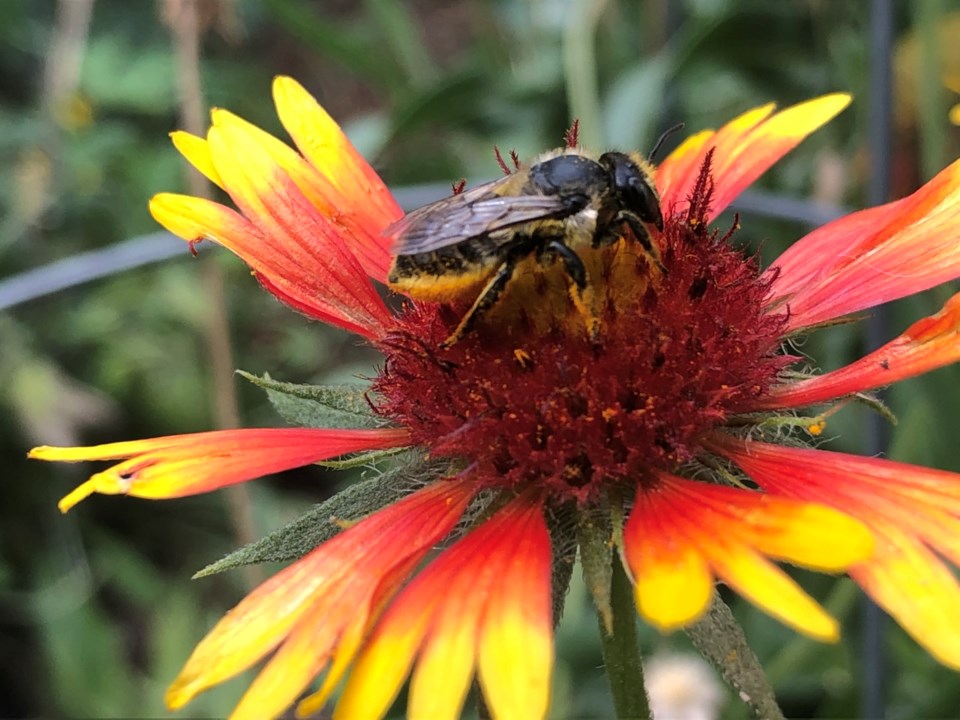A quiet revolution is taking place in gardens all over Saskatoon. A renewal. A return to appreciating the beauty of the plants that have been blooming on these lands for thousands of years. By adding native plants to your garden, you can be part of this “growing” trend.
Why is it important to welcome native plants back into our neighbourhoods? We live in a time of crisis. The Earth is losing natural habitats at an alarming rate, and the prairies have been hit especially hard. In Saskatchewan as a whole, at least 80% of the grassland ecosystem has already been lost, either to agriculture and other industries or, increasingly, to urban sprawl. Around Saskatoon, the situation is even worse, with more than 95% of the natural vegetation gone.
Loss leads to loss, and it is unsurprising to learn that the populations of grassland birds are in freefall, suffering the deepest and most widespread declines of any habitat group on the continent. Meanwhile, both regionally and globally, insects are suffering drastic slides in both diversity and abundance. Scientists have begun to warn of an “insect apocalypse.”
As the late, great biologist E. O. Wilson once noted, insects and other arthropods are “the little things that make the world go round.” Flowering plants, which provide the fruits and vegetables that make up the healthiest third of our diets, cannot survive without pollinating insects, notably bees. Birds cannot thrive without insect larvae to feed their young. Did you know that 90 per cent of songbirds, including species that eat seeds as adults, require caterpillars to rear their nestlings? The plants nourish the insects; the insects nourish the birds. Everything is interrelated.
Meanwhile out in the garden, we can help to keep the circle of life turning by providing insects with the resources they need to thrive. Yes, we are talking about gardening for insects! That means growing native plants to sustain native insects. Supporting moths and butterflies through the stages of their complex lives involves choosing plants like goldenrods and sunflowers that feed lots of caterpillars, while at the same time making sure there are nectar-sweet blossoms like bergamot and giant hyssop to feed the flying adults. It means leaving leaf litter on the ground to protect overwintering eggs, pupae and adults.
And then there are the wild bees! We have at least 300 species of native bees in the province, some smaller than ants, others the size of your thumb. They need a variety of flowering plants that provide both nectar and protein-rich pollen as food for adults and young. Since different species have different preferences and needs, it is important to restore as much diversity and complexity to our native plantings as we can manage. Start small and watch how your interest and your garden grow.
Wild bees also need a shallow source of water and safe places to rear their young. Bumblebees might form a colony in a mulch pile or an old mouse nest. Most of our wild bees are solitary and nest in hollow stems or bare ground. Learn to enjoy a messy garden, and the bees will love you for it. Never, ever use insecticides or other poisons.
When you do all these things, gift after gift arrives--joy at that first hint of mauve as the crocus you planted last year emerges from the half-frozen ground, wonder at a sleeping bumblebee in a bergamot blossom, curiosity piqued when you spy a little red-and-gold bee land in fallen leaves. What could it possibly be called? As the plants take root and bloom in this place where they belong, we too begin to belong.
For more information, to view a gallery of native plants and find out how to register your native-plant garden as a Pollinator Paradise, please visit us online at
This column is provided courtesy of the Saskatchewan Perennial Society (SPS; [email protected] ). Check our website (www.saskperennial.ca) or Facebook page (www.facebook.com/saskperennial) for a list of upcoming gardening events




